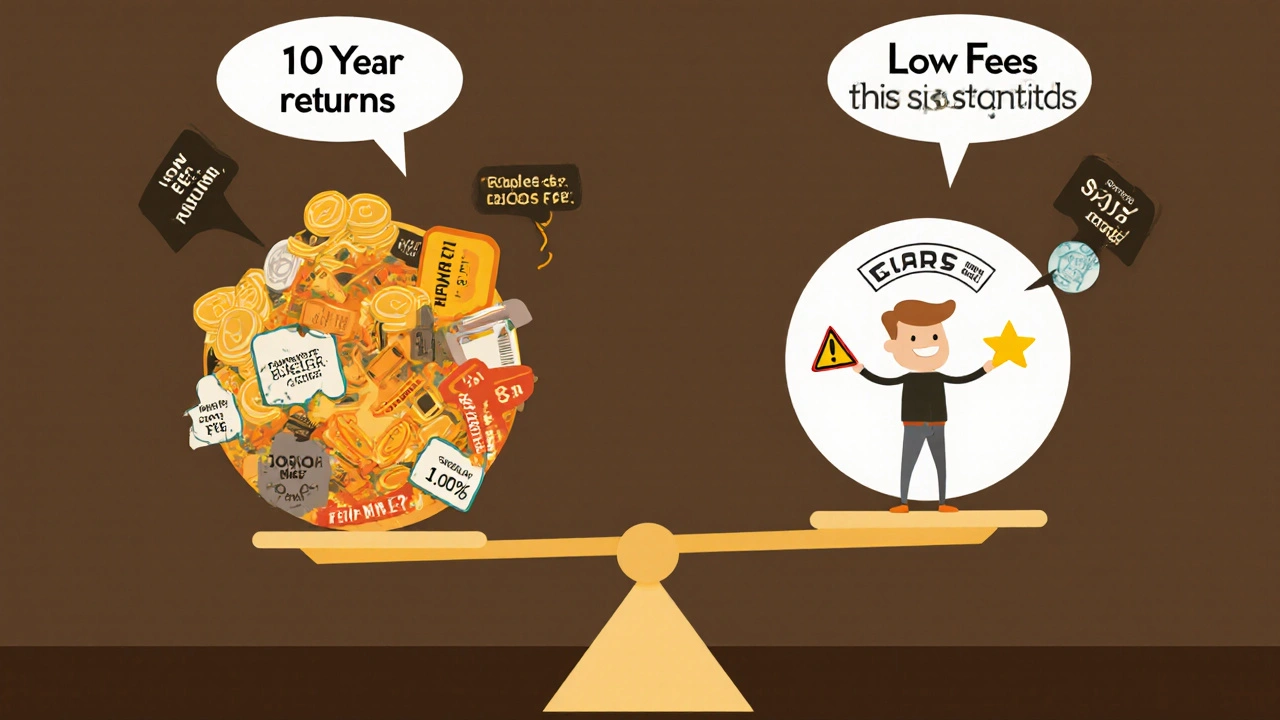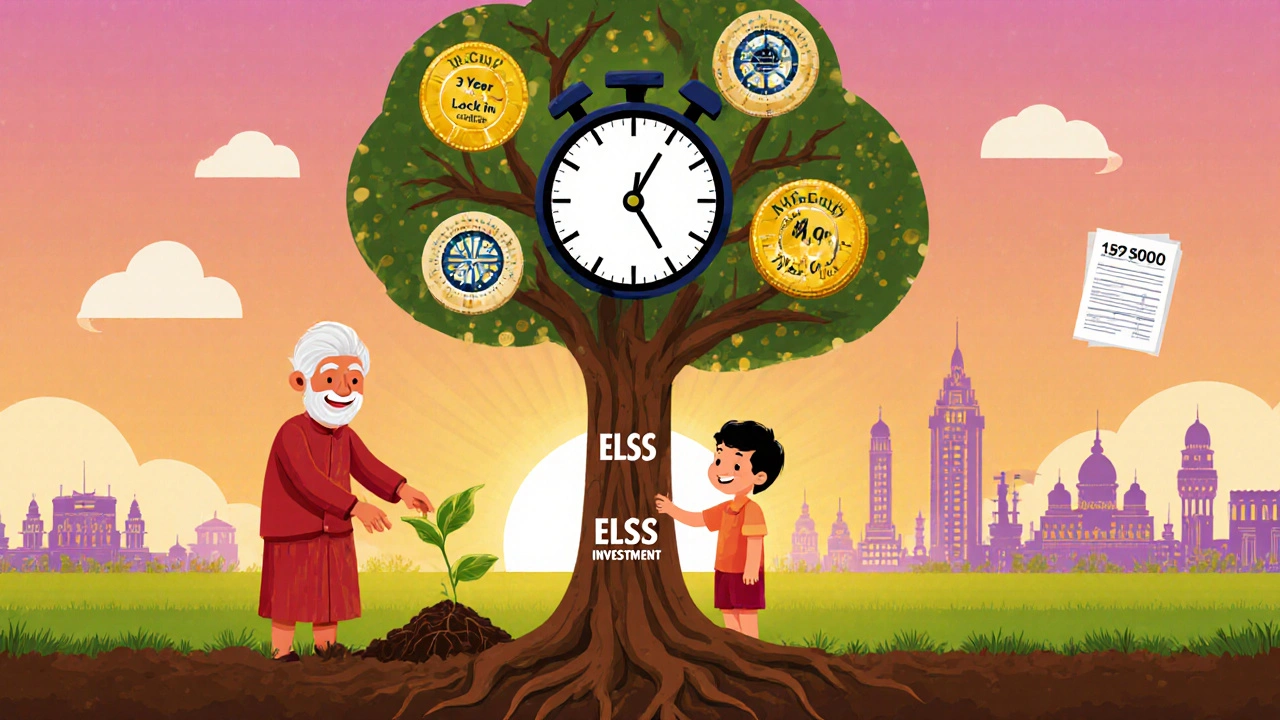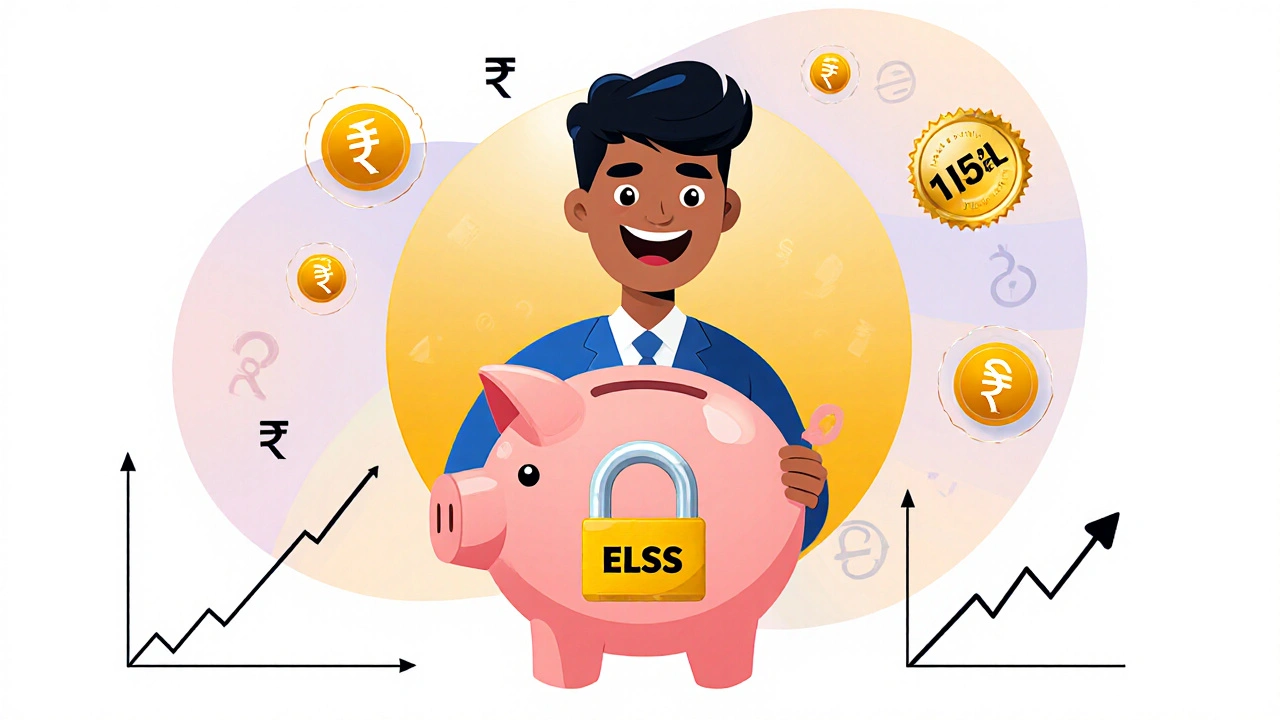How to Evaluate ELSS Funds for 80C in India: Risk, Performance, and Expense Ratio
If you're looking to save tax under Section 80C in India, ELSS funds are one of the most popular choices. But not all ELSS funds are created equal. Some deliver solid returns with low risk, while others drag your portfolio down with high fees and shaky performance. How do you pick the right one? It’s not about chasing last year’s top performer. It’s about understanding risk, performance, and expense ratio - the three pillars that decide if an ELSS fund actually works for you.
What Exactly Is an ELSS Fund?
ELSS stands for Equity Linked Savings Scheme. It’s a type of mutual fund that invests mostly in stocks and gives you a tax deduction under Section 80C of the Income Tax Act. You can invest up to ₹1.5 lakh per year and get that amount deducted from your taxable income. That means if you’re in the 30% tax bracket, you save up to ₹46,800 a year just by investing in ELSS.
But here’s the catch: ELSS has a mandatory 3-year lock-in. You can’t withdraw your money before that. That’s longer than PPF (15 years) or NSC (5 years), but shorter than most other tax-saving instruments. The lock-in forces discipline - you can’t panic-sell during market dips. That’s actually a good thing for most investors.
ELSS funds are different from regular equity funds because of the tax benefit. But they behave like equity funds in terms of risk and returns. So if you’re not comfortable with stock market swings, ELSS might not be for you.
Performance: Look Beyond the Last 1 Year
Many people pick ELSS funds based on the last year’s returns. That’s a mistake. The market changes fast. A fund that did great in 2024 might crash in 2025. Instead, look at 3-year, 5-year, and 10-year returns. Why? Because the lock-in period is 3 years. You need to know how the fund has handled full market cycles - bull runs and crashes.
For example, in 2022, when the market dropped 15%, top ELSS funds like Parag Parikh Flexi Cap and Axis ELSS delivered positive returns. Why? Because they held quality stocks with strong balance sheets, not hype-driven growth stocks. Meanwhile, funds that loaded up on unprofitable tech startups lost 20-30%.
Check the fund’s performance against its benchmark - usually the Nifty 500 TRI or BSE 200 TRI. If a fund consistently beats its benchmark over 5+ years, that’s a sign of good stock-picking. If it’s always lagging, even in good markets, it’s probably not worth your money.
Also, look at consistency. Use the Sharpe Ratio - a measure of risk-adjusted return. A Sharpe Ratio above 1.0 is good. Above 1.5 is excellent. Most ELSS funds hover between 0.7 and 1.3. If one says 1.8, dig deeper. It might be a fluke or a small fund that’s easier to move.
Risk: Not All Equity Is the Same
ELSS funds are equity funds, so they carry risk. But risk isn’t just about volatility. It’s about what kind of stocks the fund owns.
There are three main types of ELSS funds:
- Large-cap focused: Invests in big, stable companies like Reliance, HDFC Bank, Infosys. Lower risk, steady returns. Good for conservative investors.
- Multi-cap: Mix of large, mid, and small caps. Higher growth potential, but more volatile. Best for investors with a 7+ year horizon.
- Flexi-cap: Fund manager picks stocks across market caps based on value, not size. Often the best performers over time. Parag Parikh Flexi Cap is a prime example - it beat 95% of ELSS funds over 10 years.
Check the fund’s portfolio. If more than 30% is in small-cap stocks, the risk goes up. Small caps can give 20-30% returns in good years, but they can also drop 40% in bad ones. In 2022, small-cap funds lost an average of 25%. Large-cap ELSS funds lost only 8-10%.
Also, look at the top 10 holdings. If one stock makes up more than 15% of the fund, that’s a red flag. If the fund is too concentrated, one bad quarter can wreck your returns. A healthy fund spreads risk across 50+ stocks.
Another risk factor: fund size. If an ELSS fund has less than ₹500 crore in assets, it might be too small. Small funds can be more agile, but they’re also more likely to close if investors pull out. In 2023, 12 ELSS funds with under ₹300 crore were merged or shut down.

Expense Ratio: The Silent Killer of Returns
Expense ratio is the annual fee the fund charges you - usually shown as a percentage. It includes management fees, admin costs, marketing, and more. Sounds small? A 1.5% fee on ₹1 lakh is ₹1,500 a year. Over 10 years, that’s ₹15,000 - plus the compounding you lost.
Here’s the truth: ELSS funds with expense ratios above 1.75% are rarely worth it. Most top-performing funds charge between 0.8% and 1.3%. For example, Axis Long Term Equity charges 1.12%. Parag Parikh Flexi Cap charges 1.05%. Both have delivered 15%+ annual returns over 10 years.
Compare that to funds charging 2.2% or more. Even if they show higher returns, the fees eat up most of the gains. In 2024, a fund with 18% returns and a 2.1% expense ratio ended up giving investors only 15.9% net. A fund with 16% returns and 1.0% expense ratio gave 15% net - almost the same, but with lower risk.
Watch out for exit loads too. Most ELSS funds don’t charge exit loads after the lock-in, but some do. Always read the fund’s fact sheet.
How to Compare ELSS Funds Side by Side
Here’s a simple way to compare funds. Make a quick table with these five columns:
| Fund Name | 3-Year CAGR | Expense Ratio | Asset Size (₹ Cr) | Top Holdings (Max %) |
|---|---|---|---|---|
| Parag Parikh Flexi Cap | 16.2% | 1.05% | ₹18,500 | 8.1% |
| Axis Long Term Equity | 15.8% | 1.12% | ₹12,300 | 7.9% |
| ICICI Prudential Long Term Equity | 14.1% | 1.35% | ₹15,700 | 9.2% |
| SBI Small Cap Fund | 18.5% | 1.98% | ₹4,200 | 14.7% |
| HDFC TaxSaver | 13.9% | 1.42% | ₹21,000 | 6.5% |
Notice how SBI Small Cap has the highest returns - but also the highest expense ratio and smallest fund size. That’s a red flag. It’s risky. Parag Parikh and Axis have strong returns, low fees, and big asset bases. They’re safer bets.

What to Avoid
Here are three common mistakes investors make:
- Chasing past performance: A fund that was #1 last year might be #20 this year. Don’t buy based on headlines.
- Ignoring the lock-in: If you might need the money in 2 years, don’t invest in ELSS. The penalty for early withdrawal is zero - you just can’t access it.
- Buying through agents with high commissions: Many agents push funds that pay them 1-2% upfront. These are rarely the best funds. Use direct plans - they have lower expense ratios and no commissions.
Also, avoid funds with frequent fund manager changes. If the manager left in the last 12 months, wait. New managers bring new strategies - and new risks.
How to Start
Here’s your simple checklist to pick your first ELSS fund:
- Choose a fund with a 5-year return above 12%
- Make sure the expense ratio is under 1.5%
- Check that the fund size is over ₹1,000 crore
- Ensure no single stock holds more than 10% of the portfolio
- Buy the direct plan - not the regular plan
- Invest through SIP - ₹5,000/month is enough to start
Once you pick one, stick with it. Don’t switch every year. Tax-saving investments are long-term plays. The power of compounding works best when you stay put.
What Comes Next?
ELSS is just one part of your tax-saving plan. You can combine it with PPF, NPS, life insurance, and home loan principal payments to hit your ₹1.5 lakh limit. But don’t overdo it. If you’re already maxing out your 80C limit, focus on growing your investments - not just saving tax.
After 3 years, don’t just cash out. Reinvest. Let your returns keep working. Many people withdraw after lock-in and miss out on 10-15 years of growth.
ELSS funds aren’t magic. But when you pick the right ones - based on risk, performance, and cost - they’re one of the most powerful tools you have to build wealth and save tax at the same time.
Can I invest more than ₹1.5 lakh in ELSS?
Yes, you can invest more than ₹1.5 lakh in ELSS funds. But only the first ₹1.5 lakh qualifies for tax deduction under Section 80C. Any amount above that is treated like a regular equity mutual fund - no tax benefit, but still eligible for long-term capital gains tax exemption after 1 year.
Are ELSS funds better than PPF for tax saving?
It depends. PPF is safer - returns are guaranteed at around 7.1% (as of 2025), and it has a 15-year lock-in. ELSS has higher potential returns (12-15% average) and only a 3-year lock-in. If you can handle market risk, ELSS grows your money faster. If you want zero risk, PPF is better. Many investors use both: PPF for safety, ELSS for growth.
Do ELSS funds pay dividends?
Most ELSS funds don’t pay dividends anymore. Since 2020, SEBI banned dividend payout options in tax-saving funds to prevent misuse. All ELSS funds now offer only growth options. This means your returns come from the increase in NAV, not cash payouts. It’s actually better - your money keeps working instead of being pulled out.
Is ELSS riskier than fixed deposits?
Yes, ELSS is much riskier than fixed deposits. FDs offer guaranteed returns, usually 6-7% in 2025. ELSS returns depend on the stock market and can go up or down. In bad years, you can lose 10-20%. But over 5-10 years, ELSS has historically delivered much higher returns than FDs - often 2-3x more. Risk and reward go hand-in-hand.
Can I switch ELSS funds after 3 years?
Yes, you can switch after the 3-year lock-in ends. But don’t switch just because the fund underperformed for a year. Look at 5-year performance. If the fund consistently beats its benchmark and keeps fees low, hold it. Switch only if the fund manager changes, fees rise above 1.8%, or the portfolio becomes too risky (e.g., more than 40% in small caps).
What happens if I miss the 80C deadline?
The financial year ends on March 31. If you invest in ELSS after March 31, you can’t claim the deduction for that year. But you can still invest - it just won’t count toward your ₹1.5 lakh limit for that tax year. Plan ahead: set up an SIP by February to ensure you meet the deadline.





